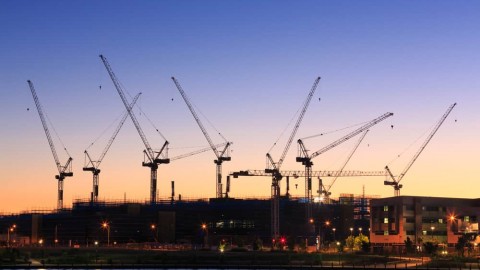Roads are critical infrastructure, and monitoring and understanding the condition of our roads is of vital importance. Infrastructure Editor Laura Harvey caught up with Richard Wix, Technical Specialist with the Australian Road Research Board, to learn about some of the latest technologies in road condition monitoring and assessment, and to gain a look into the future for this critical research area.
Can you explain why councils and governments need to take a proactive approach to assessing the condition of their roads? What are the key benefits of a proactive, rather than reactive, approach?
Whether it is at the municipal, state or federal level of government, the road network is the agency’s most valuable asset. In terms of mobility, it is also the most critical – people need to get to work, school, go shopping, goods need to be distributed and so on. As such, it needs to be well managed. If road agencies take a proactive approach to assessing the condition of their roads, it will allow them to make the best use of their roads budget by making informed decisions based on the current condition of the road network.
In short, being proactive saves money. It extends pavement life by applying appropriate maintenance treatments at the appropriate point in time rather than waiting for the pavement to fail or for road users to complain. The cost of maintenance can be a magnitude lower than the cost of rehabilitation and reconstruction, so developing an effective and proactive work program will ultimately deliver efficiencies for the agency. It also enhances the driving experience and minimises road user costs by ensuring the road network is in the best condition it can be based on budgetary constraints.
Can you outline some of the new technologies available for road condition monitoring? How do these improve on previously utilised technologies?
In recent times, we have seen the deployment of laser-based 3D systems that are capable of reproducing the actual surface shape of the pavement from which numerous pavement condition parameters can be monitored. These parameters include cracking and other pavement distresses, transverse profiles and even the roughness and macro-texture of the surface.
The 3D systems improve on current camera-based methodologies as they are unaffected by shadows and do not require additional lighting systems – they can even operate at night. They typically measure the full lane width in which the survey vehicle is travelling, and the systems have additional smarts to allow the identification of the lane marking so that the measurements are limited to the lane surface.

Laser-based 3D systems can now be used to monitor parameters such as cracking.
One of the biggest improvements is that cracking and other defects can be automatically identified using specific algorithms rather than rated manually by a person, thereby producing objective rather than subjective assessments. The transverse profile is also much more comprehensive, consisting of thousands of measurements across the lane compared to only a handful from survey vehicles that use a point laser system. This allows a more detailed assessment of the rut depth across the lane, which is important when trying to identify locations where ponding may occur in the wheel ruts.
However, even more exciting than the above, is the recent introduction to Australia of the traffic speed deflectometer (TSD). This device utilises Doppler laser sensors and a ten tonne load over the rear axle to assess the bearing capacity (strength) of the road at highway speeds.
Therefore, for the very first time, road agencies have the ability to assess the strength of their entire road networks in a safe and cost-efficient manner, and several of them have already availed themselves of this technology. Further to this, ARRB has integrated a suite of additional pavement condition monitoring technologies to the TSD, including a 3D system, asset cameras and roughness and texture measurement systems, which allow the TSD to collect all the data needed to provide a full structural and functional evaluation of the road network in a single pass. It’s a “one stop shop” as far as pavement data collection goes.
With this technology, road agencies can make fully informed decisions, based on what’s happening on top of and below the surface of the pavement, at a reduced cost and determine what actions are best for their road network.
What are the main challenges in assessing the strength of pavement? How can these be overcome?
In Australia strength measurements traditionally been the domain of the falling weight deflectometer (FWD) and the deflectograph, and before that it was the Benkelman beam. However, these devices either operate statically or at very low speed.
Therefore, when used, they require significant levels of traffic control which is very expensive (it can often be more than the cost of the actual testing itself). This is generally accepted as being part and parcel of project level work.
However, the slowness of measurement and the cost of the traffic control is very limiting if an agency is interested in determining strength across their whole network, particularly if it consists of many thousands of kilometres. So the challenge is, how can I assess the strength of my entire network in a safe and cost-effective manner?
This is where a device like the TSD comes into its own. It overcomes the above limitations by operating at traffic speed, which does away with the need for extensive traffic control, and it can survey the network relatively quickly (>250km per day). Unlike the FWD, it also produces a continuous deflection measurement rather than measurements at discrete points, which are often widely spread (up to hundreds of metres when the FWD has been used for network-level assessments).
However, the TSD still has some limitations due to its size (it consists of a truck and trailer), and also the load over the rear axle which can limit access on some roads and bridges. Studies are also being undertaken to see if the outputs of the TSD can also be used for project-level work and pavement design rather than just as a screening tool.

Drone technology will soon be able to provide valuable insights into the condition of our roads.
What are the benefits that come with having access to large amounts of data on the condition of roads in a certain suburb/city/state/across the country?
The more data you have, the greater the ability to understand what’s going on with your road network and in line with what was said previously, the better decisions you can make. This is true whether you are talking about a suburban street or a national highway.
However, the type of data you collect may vary depending on the road class.
Additionally, road condition data that has been collected over time can be used in the design of pavements and to develop models to predict pavement performance, even estimating the remaining life of the pavement. This can benefit road networks throughout the country.
It also helps to supplement the pavement condition data with information on the surrounding environment. Is there adequate drainage along the roadside? If not, it can have a negative impact on the pavement. Information like this can be gathered by reviewing digital imaging from asset cameras mounted to the survey vehicle which is collected at the same time as the other pavement condition data.
However, I certainly don’t advocate collecting data for data’s sake. Data collection isn’t cheap and you need to be able to leverage the data. Therefore, a targeted approach is much more advisable. Otherwise, the money is better spent elsewhere.
Where do you see road assessment technologies moving in the future? What can we expect to see in the next five to ten years?
Pavement condition monitoring technology continues to progress at a rapid pace. New systems are being developed, older ones enhanced and new uses are being found for technologies initially developed for other applications. What can be done today in terms of 3D and strength measurement didn’t seem possible a decade ago.
Developers, like ARRB, will continue to take new pavement measurement technologies and integrate them into survey platforms such as the TSD. For instance, ARRB is currently working on integrating ground penetrating radar (GPR) into the TSD which will not only allow users to assess the strength of the pavement, but also see what is happening under the surface. This is particularly useful in areas where the pavement has been identified as being weak.

The ARRB TSD surveying the New Zealand road network, Mount Cook National Park.
As we gain a deeper understanding of what is happening above and below the surface, we could even see the development of new, more relevant, pavement condition metrics or indices.
Terrain modelling is another relatively new development which allows you to produce a real life 3D representation of the road network, hills and valleys included, rather than just the surface of the pavement. The data can even be imported into GIS systems for analysis and design. Taking this a step further, you could combine this information with 3D point clouds, collected using LiDAR (light imaging and radar), to generate a 3D representation of the whole road corridor.
This could lead to a foray into the virtual world where you could actually walk the network and inspect the condition of the road from the confines of your office, using a virtual reality headset.
I think road assessment technologies will also become more compact, which will enable us to make better use of drones to collect pavement condition data. Maybe we could develop a lightweight 3D LiDAR system capable of creating very accurate and dense point clouds, from which we could determine the surface characteristics of a pavement. This would be particularly useful in remote or dangerous areas. It’s already being done to a certain degree, but current flight regulations limit the practicality of the technology.
Then there’s smartphones. As their computing power increases, their capability to collect pavement condition information will improve, and as there are so many of them in operation at the same time, the real-time feedback can provide input into advanced driving systems and information to autonomous vehicles. Maybe we’ll end up with autonomous data collection systems too, using dedicated vehicles or technology fitted to the road fleet.
It won’t happen in the next five to ten years, but if we’re talking about the future, I think we could eventually end up with “living” roads.
Surfaces could be comprised of nano-technologies that are capable of altering the frictional and textural properties of the road surface depending on characteristics such as weather condition and traffic flow, and provide real-time feedback to network managers. We’re already talking about self-healing roads, so it’s not too much of a stretch. But then again, maybe we won’t be driving on the roads in the future.
How does road assessment in australia compare with the approach taken overseas?
In many ways the approach taken by road agencies here in Australia is similar to what is being implemented overseas. There are some differences because the majority of our sealed network is spray seal rather than concrete or asphalt which are more common in countries like the US and Europe.
However, we generally collect the same pavement condition parameters such as roughness, rutting, cracking and various other distresses, and report them in accord with international standards where they exist. Much time and effort has also been put into developing our own Australian test methods which aim to harmonise data collection and reporting throughout the country.
One major difference, compared to some other countries, is our willingness to utilise new road assessment technologies. We have a long history of doing so, going back to the 1980s, with the implementation of inertial profilometers for roughness measurement. The most recent device to be embraced by the road agencies is the TSD, so much so, that it has been necessary to obtain a second system to meet demand.
















